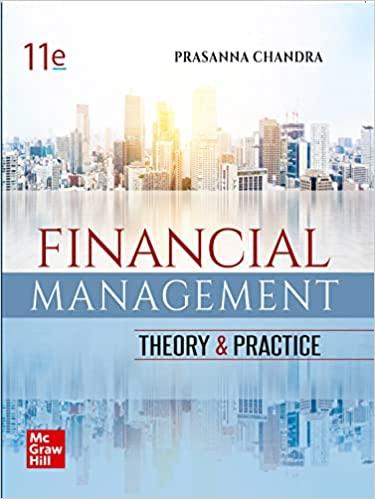Question
1) Spencer Supplies stock is currently selling for $60 a share. The firm is expected to earn $5.40 per share this year and to pay
1) Spencer Supplies stock is currently selling for $60 a share. The firm is expected to earn $5.40 per share this year and to pay a year-end dividend of $3.60. a. If investors require a 9% return, what rate of growth must be expressed for Spencer? b. If Spencer reinvests earnings in projects with average returns equal to the stocks expected rate of return, then what will be next years EPS ? (Hint: g = ROE x Retention ratio).
2) Suppose the Schoof Company has this book value balance sheet:
Current Assets 50,000,000; Fixed Assets $ 30,000,000; Total Assets $ 80,000,000
Current Liabilities $ 10,000,000 Long-term debt 30,000,000 Common equity Common stock (1 million shares) 1,000,000 Retained Earnings 39,000,000
Total Claims $ 80,000,000
The current liabilities consist entirely of notes payable to banks, and the interest rate on this debt is 10%, the same as the rate on new bank loans. These bank loans are not used for seasonal financing but instead are part of the companys permanent capital structure. The long-term debt consists of 30,000 bonds, each with a par value of $1,000, an annual coupon interest rate of 6%, and a 20-year maturity. The going rate of interest on new long-term debt, r_d , is 10%, and this is the percent yield to maturity on bonds. The common stock sells at a price of $60 per share. Calculate the firms market value capital structure.
3) The Pinkerton Publishing Company is considering two mutually exclusive expansion plans. Plan A calls for the expenditure of $50 million on a large-scale, integrated plant that will provide an expected cash flow stream of $8 million per year for 20 years. Plan B calls for the expenditure of $15 million to build a somewhat less efficient, more labor-intensive plant that has an expected cash flow stream of $3.4 million per year for 20 years. The firms cost of capital is 10%.
a. Calculate each projects NPV and IRR.
b. Set up a Project by showing the cash flows that will exist if the firm goes with the large plant rather than the smaller plant. What are the NPV and IRR for this Project ?
c. Give a logical brief explanation, based on reinvestment rates and opportunity costs, as to why the NPV method is better that the IRR method when the firms cost of capital is constant at some value such as 10%.
Step by Step Solution
There are 3 Steps involved in it
Step: 1

Get Instant Access to Expert-Tailored Solutions
See step-by-step solutions with expert insights and AI powered tools for academic success
Step: 2

Step: 3

Ace Your Homework with AI
Get the answers you need in no time with our AI-driven, step-by-step assistance
Get Started


